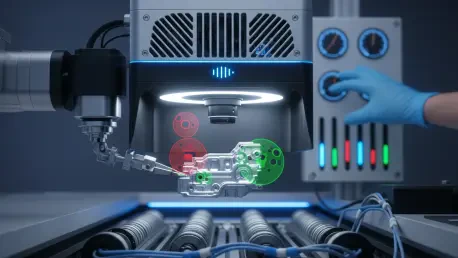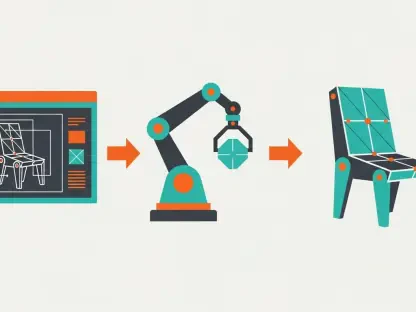Why AI Now Sits on the Factory Floor, Not in the Lab
Supply shocks, higher energy and material costs, and customized orders that change by the week have pushed experimentation off the table and made operational AI a competitive mandate. The message from the field is blunt: point solutions in sandboxes no longer move the needle when uptime, yield, and lead times define profit. Factories need models that sit next to machines, nudge schedules in real time, and flag defects before scrap piles up.
Industry voices converge on impact over novelty. Leaders frame goals in the same boardroom language used for other capital investments: cost per unit, downtime hours, OEE, yield, and scrap rate. AI earns its place when it tightens those numbers, not when it dazzles with demos. That shift has turned attention toward architectures that scale, governance that withstands audits, security that spans OT and IT, and training that helps operators trust recommendations.
What follows blends guidance and results from platform providers and manufacturers into a practical playbook. The themes recur across sources: sequence use cases carefully, standardize data and lineage, balance edge and cloud, embed zero-trust, and measure relentlessly. However, the emphases differ—some champion workflow unification, others prioritize interoperability—and those contrasts clarify choices.
Turning Proofs of Concept into Plant-Level Performance
Roundtable contributors agree on a common bottleneck: promising pilots that never cross into daily operations. The consensus remedy starts with scoping problems tightly, proving ROI in one line, and instrumenting outcomes from day one. Success then travels by template—replicating data models, integration patterns, and change-management steps rather than rewriting them for each site.
There is also alignment that value appears fastest when AI is embedded where bottlenecks hurt most. Predicting failures before they cascade, balancing schedules against constraints, tuning energy-intensive assets, and inspecting in-line are repeatable entry points. In contrast, sprawling, multi-plant programs often stall under integration debt before savings accrue.
From Trials to Tangible KPIs: Making the Business Case Stick
Manufacturers describe wins when AI becomes part of standard work: models trigger maintenance when vibration profiles drift, scheduling agents resequence orders to absorb material delays, and vision systems score defects mid-run. The KPI effects are direct—less unplanned downtime, lower maintenance cost per unit, better first-pass yield—and OEE rises as availability, performance, and quality tighten in tandem.
Survey data from Google Cloud shows broad adoption of AI agents in planning and quality, reinforcing that leaders treat AI as an operational lever, not a lab toy. Outcomes reported by Motherson Technology Services—maintenance costs down 25–30%, downtime reduced 35–45%, and production efficiency up 20–35%—serve as realistic markers when governance and enablement are in place.
Skeptics warn of “pilot purgatory,” where proofs of concept inflate expectations without baselines or reporting. Contributors counter with a discipline borrowed from lean: define the starting point, lock KPIs, publish weekly deltas, and tie funding to verified gains. Executive sponsorship holds when progress is visible and repeatable.
Architecting for Speed and Scale: OT/IT Fusion with Edge-Cloud Hybrids
Practitioners outline a pattern: run inference near machines for low latency and resilience, but centralize training, fleet analytics, and MLOps in the cloud. This split keeps lines moving during network hiccups while continuously improving models from aggregated data across plants.
Microsoft’s maturity-path framing underscores that standardizing schemas, telemetry, and lineage accelerates every step that follows. ServiceNow advocates unifying workflows so maintenance tickets, quality alerts, and scheduling changes share context, which reduces swivel-chair integration and data silos. Both positions complement each other—structure the data, then orchestrate the work.
Trade-offs remain. Edge-first designs control latency but can raise hardware and management costs; cloud-centric patterns simplify fleet learning but risk lag and bandwidth strain. Contributors urge planning for model drift, interoperability across sensors and MES/ERP, and versioning that tracks which model influenced which decision on which asset.
Trust by Design: Governance, Security, and the Human Factor
Security leaders extend zero-trust into OT: segment networks, enforce strong identity, grant least privilege, and monitor continuously. Incident response plans now include production systems, with playbooks for isolating affected cells and restoring operations without spreading risk.
Operations leaders emphasize people as the fulcrum. Cross-functional squads—operators, engineers, data teams—translate domain knowledge into features and acceptance criteria. Training shifts AI from opaque to obvious: explain what the model sees, show confidence levels, and document when to override.
The roundup pushes back on the notion that automation sidelines expertise. Instead, roles are clarified. Engineers tune constraints and validate models; operators use guidance to reduce variability; data teams maintain pipelines and quality. Collaboration becomes the safeguard that keeps AI practical and trusted.
Scale Without Lock-In: Sequencing Use Cases and Keeping Options Open
Contributors favor a cadence: start with predictive maintenance, energy optimization, or automated inspection; validate in one cell or line; expand to a plant; then roll across sites. Each wave packages integrations, change management, and KPI reporting so replication speeds up and risk declines.
Ecosystem strategies vary. Google Cloud highlights AI agents and data platforms that span planning through quality. Microsoft leans on a standardized path that tames legacy equipment and silos. ServiceNow centers on workflow unification across teams and systems. Motherson Technology Services showcases outcomes from consolidating platforms while enabling the workforce. The shared thread is openness—APIs, common schemas, and modular components—to avoid lock-in.
Looking ahead from this baseline, experts describe agentic workflows that coordinate maintenance, quality, and scheduling; adaptive sequencing that reacts to supply changes; and multi-plant optimization that balances capacity across regions. The caution is clear: rigid architectures slow learning curves and strand investments when conditions shift.
What Leaders Should Do Next
Action starts with measurement. Establish baselines for downtime hours, maintenance cost per unit, yield, scrap rate, throughput, and OEE. Stand up a cross-functional team that owns one high-value use case, standardizes data schemas, and commits to weekly reporting. Select an edge-cloud pattern that fits latency needs, but ensure pipelines support model retraining and lineage.
Design for use on the floor. Build explainability into interfaces, budget beyond software for sensors and connectivity, and map incident response to production realities. Instrument continuous improvement loops so feedback from operators refines models, and models, in turn, refine work.
Finally, treat governance and interoperability as long-term assets. Embed zero-trust across OT and IT, pick platforms that integrate with existing MES/ERP, and protect flexibility with open standards. These choices shorten time to value and reduce regret costs when scaling.
The Competitive Edge Is Measured, Not Promised
The collective view showed that AI delivered gains when tied to KPIs, governed from the start, and deployed on hybrid architectures that balanced edge decisions with cloud learning. Contributors agreed that upskilling, workflow unification, and open integration formed the scaffolding for durable results. The next step was to select one measurable use case, set baselines, and prove value in weeks, not months, while planning the second and third waves. For readers seeking depth, the most useful follow-on material included maturity-path guides for data standardization, security playbooks that extend zero-trust into OT, and case studies that break down OEE, yield, and downtime improvements by use case.









